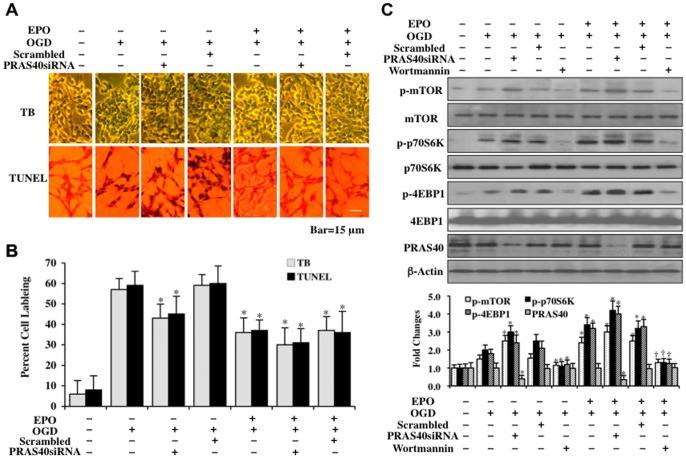Figure 3. Loss of PRAS40 prevents cell demise, improves EPO cytoprotection, and increases phosphorylation of mTOR, p70S6K, and 4EBP1.
(A) Representative images of trypan blue (TB) dye staining and TUNEL assay performed 24 hours following OGD exposure in SH-SY5Y cells show that PRAS40 siRNA transfection prior to OGD significantly reduced trypan blue and TUNEL staining and mildly improved cytoprotection by EPO (10 ng/ml) applied 1 hour prior to OGD. (B) Quantitative results of cell survival assessed by trypan blue dye exclusion (TB) and DNA fragmentation by TUNEL assay demonstrate that PRAS40 siRNA transfection during OGD alone or during EPO (10 ng/ml) with OGD significantly decreased percent staining of trypan blue and TUNEL 24 hours following OGD (*P<0.01 vs. OGD treated alone). Scrambled siRNA transfection did not alter cell injury during OGD exposure or EPO treatment with OGD. (C and D) PRAS40 siRNA was transfected into SH-SY5Y cells prior to OGD and western blot analysis for phosphorylated (p-) p-mTOR, p-p70S6K, p-4EBP1, and total PRAS40 was performed in cell extracts at 3 hour following OGD. EPO (10 ng/ml) applied 1 hour prior to OGD significantly increased the expression of p-mTOR, p-p70S6K and p-4EBP1. Transfection with PRAS40 siRNA increased, although the increase is not statistically significant, the expression of p-mTOR, p-p70S6K and p-4EBP1 during OGD alone and during EPO (10 ng/ml) with OGD exposure. Transfection with PRAS40 siRNA significantly limited the expression of total PRAS40. Scrambled siRNA did not alter expression of p-mTOR, p-p70S6K. p-4EBP1, total PRAS40 during OGD alone and during EPO (10 ng/ml) with OGD exposure (*P<0.01 vs. OGD; † P<0.01 vs. EPO/OGD). In all cases above, each data point represents the mean and SD from 3 experiments.

